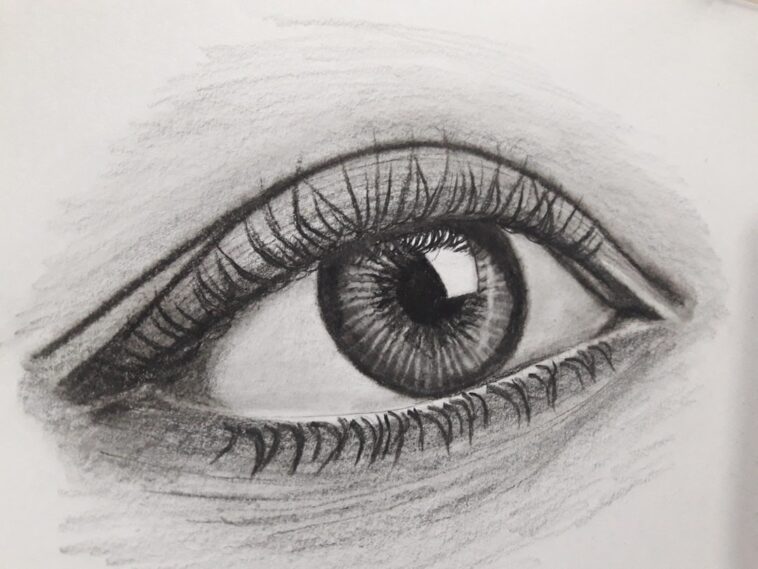Want to learn how to draw a fox? You’ve come to the right place! Foxes are beautiful and interesting animals, and drawing them can be a lot of fun. This guide will walk you through the process, step-by-step, making it easy even if you’re just starting out with art. We’ll cover the basics of sketching, shaping, and adding details to create your own fantastic fox drawing.
Gather Your Supplies
Before we start, let’s make sure you have everything you need. The good news is, you don’t need a lot! Here’s a basic list:
- Paper: Any kind of paper will do, but drawing paper or sketchbook paper is best.
- Pencil: A regular #2 pencil is perfect for sketching. You might also want a softer pencil (like a 2B or 4B) for shading.
- Eraser: A good eraser is essential for fixing mistakes and cleaning up lines. A kneaded eraser is great for lifting graphite without damaging the paper.
- Optional: Colored pencils, markers, or paint if you want to add color to your finished drawing.
Let’s Get Started: A Step-by-Step Guide to Drawing a Fox
We’ll start with a simple, cartoon-style fox and then discuss how to add more realistic details later. Don’t worry about making it perfect the first time. Drawing is all about practice!
Step 1: Basic Shapes
Start with basic shapes to map out the fox’s body. Draw a large oval for the body and a smaller circle for the head. Lightly sketch these shapes, as they’re just guidelines.
Step 2: Connecting the Head and Body
Draw a curved line to connect the head and body. This will form the fox’s neck. Don’t make the neck too thick or too thin – somewhere in between looks best. Think of it as a gentle slope.
Step 3: Adding the Snout
Draw a small circle or oval extending from the front of the head circle. This will be the fox’s snout. You can make it pointy or rounded, depending on the style you prefer.
Step 4: The Ears
Draw two triangles on top of the head for the ears. Make them slightly rounded at the tips. Consider the fox’s expression when positioning the ears – perked ears suggest alertness, while droopy ears might indicate sadness or relaxation.
Step 5: Legs and Feet
Draw four legs extending from the body. Use simple lines to represent the legs at first. Then, add small ovals or rounded rectangles for the feet. Remember that foxes have relatively slender legs.
Step 6: The Tail
Draw a large, bushy tail extending from the rear of the body. The tail is one of the fox’s most distinctive features, so make it nice and fluffy! You can use curved lines to create the illusion of fur.
Step 7: Refining the Lines
Now that you have the basic shapes in place, it’s time to refine the lines. Go over your initial sketch with a darker, more confident line, shaping the body, head, and limbs. Erase any unnecessary guidelines as you go.
Step 8: Adding Facial Features
Add the fox’s eyes, nose, and mouth. For a cartoon fox, simple dots or small ovals work well for the eyes. Draw a small triangle or oval for the nose at the end of the snout. A simple curved line can represent the mouth.
Step 9: Fur Details (Optional)
To give your fox a more realistic look, add some fur details. Use short, overlapping strokes to create the impression of fur around the edges of the body, especially on the tail, ears, and cheeks.
Step 10: Shading (Optional)
Shading adds depth and dimension to your drawing. Use your pencil to lightly shade areas of the fox’s body, such as under the chin, around the legs, and on the underside of the tail. This will make your fox look more three-dimensional.
Step 11: Color (Optional)
If you want to add color, use colored pencils, markers, or paint to fill in the fox’s fur. Foxes are typically reddish-orange, but you can use any colors you like! Don’t forget to add white to the chest, belly, and tail tip.
Tips for Drawing a More Realistic Fox
Want to take your fox drawing to the next level? Here are some tips for creating a more realistic representation:
Study References: Look at photos of real foxes to understand their anatomy and proportions. Pay attention to the shape of their head, the length of their legs, and the size of their tail.
Pay Attention to Detail: Realistic drawings are all about the details. Add individual hairs, wrinkles in the skin, and subtle variations in color to make your fox look more lifelike.
Use Light and Shadow: Realistic shading is crucial for creating depth and dimension. Use a variety of shading techniques, such as hatching, cross-hatching, and blending, to create realistic shadows and highlights.
Practice Anatomy: Understanding the underlying anatomy of the fox will help you draw more accurate and believable poses. Study the skeletal structure and musculature of foxes to improve your drawings.
Common Mistakes to Avoid
Even experienced artists make mistakes! Here are some common pitfalls to avoid when drawing foxes:
Disproportionate Body Parts: Make sure the head, body, legs, and tail are all in proportion to each other. A common mistake is making the head too large or the legs too short.
Stiff Poses: Avoid drawing foxes in stiff, unnatural poses. Study real fox behavior to understand how they move and pose their bodies.
Flat Shading: Flat, even shading can make your drawing look lifeless. Use a variety of shading techniques to create depth and dimension.
Ignoring Reference Material: Relying solely on your imagination can lead to inaccuracies. Always use reference photos to ensure your drawing is accurate and believable.
Frequently Asked Questions
What is the best way to learn to draw animals?
Practice! The more you draw, the better you’ll become. Start with simple shapes and gradually add more details. Study reference photos and don’t be afraid to experiment.
What kind of pencil is best for drawing?
A regular #2 pencil is fine for sketching. Softer pencils (like 2B or 4B) are better for shading, as they create darker lines.
How do I add fur texture to my drawing?
Use short, overlapping strokes to create the impression of fur. Vary the length and direction of the strokes to create a more natural look. A fine-tipped drawing pen can also be used for fur detail.
How do I draw different types of foxes?
The basic steps are the same, but you’ll need to adjust the colors and proportions to match the specific type of fox. For example, a red fox has reddish-orange fur, while an Arctic fox has white fur. Fennec foxes have very large ears.
Conclusion
Drawing a fox is a fun and rewarding experience. By following these steps and practicing regularly, you can create beautiful and expressive fox drawings. Don’t be afraid to experiment with different styles and techniques to find what works best for you. Most importantly, have fun and enjoy the process!


GIPHY App Key not set. Please check settings